A Complete Guide to Fabric Softener
Last updated on November 8th, 2023 at 12:04 am
We all have more or less curiosity about fabric softeners, like whether they can be used, when and how to use them, whether it damages the fabric, etc. There are two types of fabric softeners in the market. One is used for household laundering, and the other for industrial purposes. In this article, we will discuss a lot about household fabric softeners.

Definition of Fabric Softener
Fabric softeners are typically liquid, powder or dryer sheet products designed to be added to the wash cycle of a washing machine. During the rinse cycle, the fabric softener is released and coats the fabric’s fibres with a layer of chemicals. This layer of chemicals helps smooth out the fibers and reduce friction, making clothes feel softer and more comfortable to wear. They also add a fresh fragrance to clothing items.
Purpose of Fabric Softener
The chemicals in fabric softeners also help reduce static cling by neutralizing the electrical charge that can build up in clothes during drying. This can be particularly helpful for fabrics like synthetic fibers or wool, which are more prone to static cling.
In addition to making clothes feel softer and reducing static cling, fabric softeners can also help to reduce wrinkles and make ironing easier. The chemicals in fabric softeners can help relax the fabric’s fibres, making it less likely to wrinkle during the drying process. This can be particularly helpful for fabrics like cotton prone to wrinkling.
Fabric softeners come in various scents and formulas, including hypoallergenic and fragrance-free options. Some fabric softeners also contain additional benefits like stain protection or color brightening. However, it’s important to note that fabric softeners, such as those made from flame-resistant materials, should not be used on certain fabrics. Always read the label of your fabric softener and follow the manufacturer’s instructions for the best results.
What is Fabric Softener Made of
Fabric softeners are chemicals that work together to make apparel feel softer and reduce static cling. The exact composition of fabric softener can vary depending on the brand and formulation, but most fabric softeners contain a mix of the following ingredients:
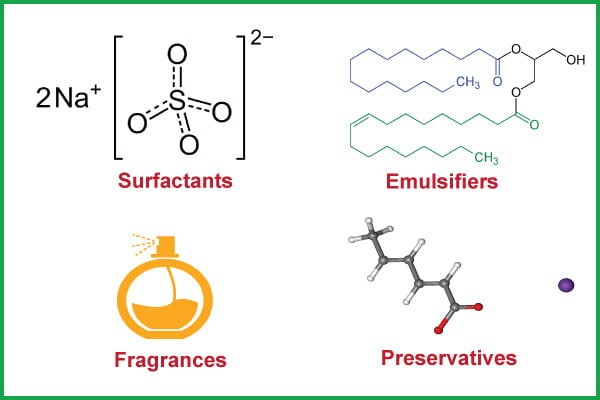
Quaternary Ammonium Compounds (quats)
These are the primary active ingredients in fabric softeners, which help coat the fabric’s fibres with a thin layer of chemicals. Quats are positively charged molecules that bond with the negatively charged fibers of the fabric, creating a barrier that helps to reduce friction and prevent static cling.
Surfactants
These are detergent-like compounds that help to disperse the fabric softener evenly throughout the wash water.
Emulsifiers
These chemicals help keep the fabric softener mixed together and prevent it from separating.
Fragrances
These are added to fabric softeners to give clothes a pleasant aroma.
Preservatives
These are added to fabric softeners to help prevent bacterial growth and extend the product’s shelf life.
It’s important to note that some fabric softeners also contain additional ingredients, such as colorants or anti-static agents, depending on the specific formulation. Some fabric softeners are also formulated to be hypoallergenic or fragrance-free for sensitive skin.
Types of Fabric Softener
There are several types of fabric softeners available on the market, including:
Liquid Fabric Softener
This concentrated formula is added to the washing machine’s rinse cycle. It is diluted with water and coats the fibers of the clothes, making them feel softer and reducing static cling. Liquid fabric softeners are available in various scents and can also be found in hypoallergenic formulas for sensitive skin.

Fabric Softener Sheets
These thin, disposable sheets and your clothes are added to the dryer. They contain a fabric-softening formula activated by the dryer’s heat. As the dryer tumbles, the fabric softener is distributed throughout the clothes, making them feel softer and reducing static cling. Fabric softener sheets are available in a variety of scents.

Fabric Softener Balls
These are reusable balls added to the dryer and your clothes. They are designed to help soften fabrics and reduce static cling as they tumble around in the dryer. Some fabric softener balls are also designed to help reduce drying time by improving air circulation in the dryer.
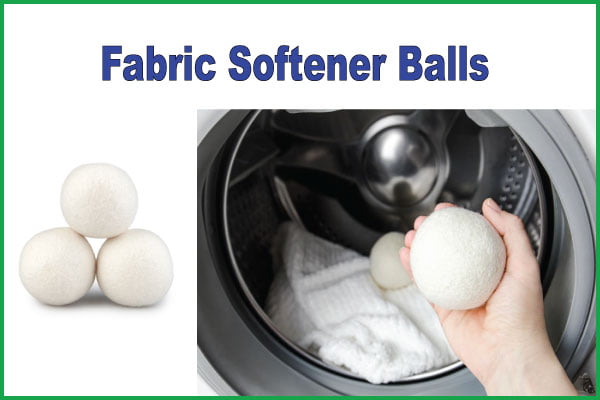
Fabric Softener Crystals
These are tiny crystals that are added to the wash cycle of the washing machine. They dissolve in the water and coat the fibers of the clothes, making them feel softer and reducing static cling. Fabric softener crystals are available in various scents and sometimes combined with laundry detergent for added convenience.
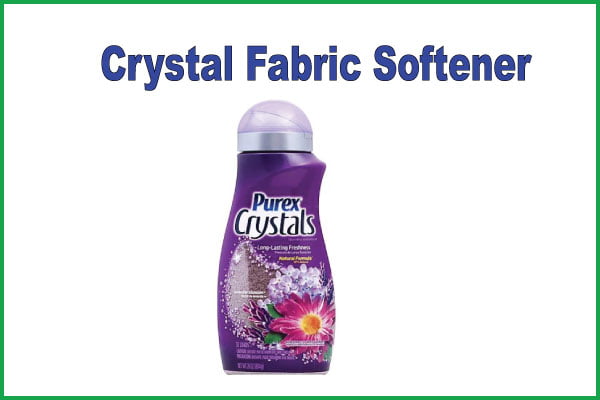
Dryer Bars
These bars are attached to the inside of the dryer and release fabric-softening ingredients as the dryer heats up. They are designed to last multiple drying cycles and can be replaced as needed. Dryer bars are available in various scents and can also help reduce static cling.

Scent Boosters
These are tiny beads or pellets added to the washing machine’s wash cycle. They dissolve in the water and help to add a fresh scent to your clothes. Scent boosters can also help to soften fabrics and reduce static cling. They are available in various scents and sometimes combined with laundry detergent for added convenience.
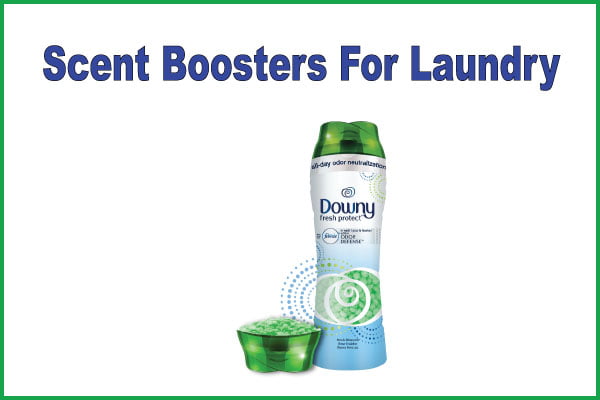
The 10 Best Fabric Softener Brands
Many fabric softener brands are on the market, and the best 10 for you will depend on your preferences and needs. Here are some of the most popular fabric softener brands:

Downy
Downy is a well-known fabric softener brand that has been around for over 50 years. It offers a range of fabric softeners, including liquid fabric softeners, dryer sheets, and scent boosters. Downy’s fabric softeners are designed to help reduce static cling, soften fabrics, and leave a fresh scent. Downy offers various aromas, including popular scents like April Fresh and Lavender & Vanilla.
Bounce
Bounce is another famous fabric softener brand known for its dryer sheets. Its dryer sheets can help reduce static cling, soften fabrics, and leave a fresh scent. Bounce offers a range of fragrances, including Outdoor Fresh and Fresh Linen. Bounce also provides fragrance-free options to those who prefer a scent-free laundry routine.
Snuggle
Snuggle is a fabric softener brand known for its cuddly bear mascot. It offers liquid fabric softeners, dryer sheets, and scent boosters. Snuggle’s fabric softeners are designed to help soften fabrics, reduce wrinkles, and leave a fresh scent. Snuggle offers a range of fragrances, including Blue Sparkle and Lavender Joy.
Gain
Gain is a laundry brand offering various products, including fabric softeners. Its fabric softeners are designed to help soften fabrics, reduce wrinkles, and leave a long-lasting scent. Gain offers different aromas, including popular scents like Original Fresh and Island Fresh.
Seventh Generation
Seventh Generation is a brand that focuses on natural and eco-friendly products. Its fabric softeners are made with plant-based ingredients and are free from harmful chemicals. Seventh Generation’s fabric softeners are designed to help soften fabrics and reduce static cling. Seventh Generation offers a range of scents, including Lavender and Blue Eucalyptus & Lavender.
Suavitel
Suavitel is a famous fabric softener brand that has been around for over 50 years. It is known for its softening and freshening in laundry and is available in liquid and dryer sheet forms. Suavitel fabric softeners are designed to help reduce static cling, soften fabrics, and leave a fresh scent.
Mrs. Meyer’s Fabric Softener
Mrs. Meyer’s is also a famous brand that offers a range of household cleaning and laundry products, including fabric softeners. Mrs. Meyer’s Fabric Softener is formulated with plant-based ingredients and is free from artificial colors, phthalates, and animal-derived ingredients. It is also cruelty-free and has never been tested on animals.
Method
Method Fabric Softener is a famous eco-friendly brand that offers a range of household cleaning and laundry products, including fabric softeners. Method Fabric Softener is designed to help soften fabrics, reduce static cling, and leave a fresh scent, all while being free from harmful chemicals. Method Fabric Softener is formulated with plant-based ingredients and is free from dyes, parabens, and phthalates. It is also cruelty-free and has never been tested on animals. Method offers a range of scents for its fabric softeners, including Beach Sage, Fresh Air, and Ginger Mango.
Dropps
Dropps Fabric Softener is an excellent option for those looking for an eco-friendly, cruelty-free fabric softener that is free from harsh chemicals and comes in a range of natural scents, with the added convenience of pre-measured droplets that dissolve in the wash. One of the key features of Dropps Fabric Softener is its innovative “droplet” design. The fabric softener comes in pre-measured, water-soluble pouches that dissolve in the wash, eliminating the need for messy liquid or sheet softeners. This design also reduces waste and packaging, making Dropps a more eco-friendly option.
Frey
Frey fabric softener is a laundry product designed to soften and freshen clothes, leaving them feeling luxurious and smelling great. It is known for its high-quality ingredients and unique fragrances. It is formulated to be gentle on fabrics, reducing static cling and making clothes feel softer. It can be used in top and front-loading washing machines and is suitable for all fabrics, including cotton, polyester, and blends. It comes in various scents, such as cedarwood, oakmoss, and sandalwood, designed to provide a long-lasting, pleasant fragrance on clothes that can last throughout the day. It is also free from harsh chemicals, including sulfates, parabens, and phthalates, making it a popular choice for those seeking a more natural and eco-friendly fabric softener.
How to Use Fabric Softener
To use liquid fabric softener, follow these steps:
First, determine the appropriate amount of fabric softener based on the size of the clothing load and the instructions on the fabric softener bottle. Most fabric softeners will have recommended amounts listed on the label.

Add the appropriate amount of fabric softener to the dispenser in your washing machine. If your washing machine does not have a dispenser, you can manually add the fabric softener directly to the wash water during the rinse cycle.
Run your washing machine, as usual, using your regular detergent and wash cycle settings. When the rinse cycle begins, the fabric softener will be dispensed into the wash water and coat the fibers of your clothes. Once the washing cycle is complete, remove your clothes from the washing machine and dry them as usual.
When you use dryer sheets, add one sheet to the dryer along with your clothes and run the dryer as usual. The heat from the dryer will activate the fabric softener on the sheet and distribute it throughout your clothes.
If you use dryer balls, Add the appropriate number to the dryer and your clothes. Run your dryer, as usual, using your regular drying cycle settings. As the dryer balls tumble around in the dryer with your clothes, they will help fluff up and separate the fabric, reducing wrinkles and making your clothes feel softer. Add a few drops of essential oils to the dryer balls to give your clothes a pleasant scent. Once the drying cycle is complete, remove your clothes from the dryer and fold or hang them as usual.
It’s important to note that fabric softener dryer balls should not be used on certain fabrics, such as those made from delicate materials.
Is Fabric Softener Necessary?
No, fabric softener is not necessary for cleaning your clothes. It is an optional laundry product that can help make your clothes feel softer, reduce static cling, and make ironing easier. However, fabric softener may not be the best choice if you have sensitive skin or allergies, as it can sometimes cause skin irritation or allergic reactions.
If you prefer not to use fabric softener, you can still achieve soft, fresh-smelling clothes by using a good-quality laundry detergent and following proper washing and drying techniques. Additionally, using dryer balls or adding white vinegar to the rinse cycle can help reduce static cling and make your clothes feel softer without fabric softener.
Fabric Softener Alternatives
If you prefer not to use fabric softeners, there are several fabric softener alternatives that you can try:
Vinegar
Adding a half-cup of white vinegar to your washing machine’s rinse cycle can help soften fabrics and reduce static cling. Vinegar also helps to remove any lingering odors and can help to brighten whites.
Baking Soda
Adding a half-cup of baking soda to the wash cycle can help to soften fabrics and remove odors. It can also help to boost the cleaning power of your detergent.
Wool Dryer Balls
Wool dryer balls are a reusable alternative to dryer sheets and fabric softeners. They help soften fabrics, reduce static cling, and even reduce drying time.
Aluminum Foil
Crumpling aluminum foil into a ball and adding it to your dryer can help reduce static cling. The foil also helps to keep clothes separated, which can reduce wrinkles.
Air Drying
The simplest and most eco-friendly way to soften fabrics is to air dry them. Hanging clothes outside on a clothesline or drying rack can help ease them naturally without fabric softeners.
Always check the care label on your clothing before trying any fabric softener alternative, as some fabrics may require specific instructions.
You may also like: Garment Washing Symbols and Meaning



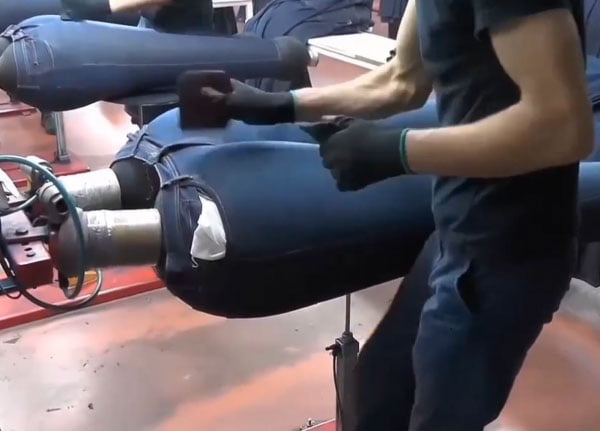
With havin so much written content do you ever run into any issues of plagorism or copyright violation? My blog has a lot of completely unique content I’ve either created myself or outsourced but it looks like a lot of it is popping it up all over the internet without my permission. Do you know any solutions to help stop content from being ripped off? I’d truly appreciate it.
I ‘d mention that most of us visitors are endowed to exist in a fabulous place with very many wonderful individuals with very helpful things.
I actually wanted to construct a simple remark to be able to thank you for these superb secrets you are sharing on this website. My particularly long internet research has at the end been compensated with high-quality facts to go over with my companions. I would claim that many of us site visitors actually are unequivocally blessed to be in a fabulous website with so many marvellous individuals with very helpful secrets. I feel extremely lucky to have encountered the website page and look forward to plenty of more cool times reading here. Thank you again for a lot of things.
The style of your writing is enthralling and the information well-written and clearly presented. Thank you for sharing this valuable piece!
Great topic, please keep it up I really enjoy reading these type articles.
Thank you for your articles. They are very helpful to me. May I ask you a question?
Your articles are very helpful to me. May I request more information?